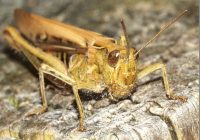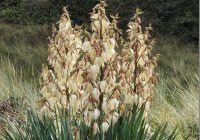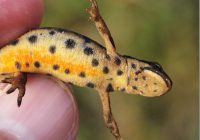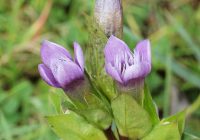Dr Phil Smith’s Wildlife Notes
September 2016
September can be a wet and windy month but not this one; it was much drier and warmer than usual. This meant a busy time for me, finishing off several field surveys, including a coastwide investigation into the ecology of Small-fruited Yellow-Sedge. I ended up with 44 colonies of this rather uncommon dune-slack specialist. Another much longer-term project is on the flora of the Devil’s Hole blow-out, Ravenmeols, with local botanist Patricia Lockwood. Adding several more species to the list we started in 2004, we reached a total of 160 higher plants for the “Hole”, about 20% of which are national or regional rarities. Although not as abundant as last year, Grass-of-Parnassus flowered here throughout the month, an attractive distraction from my rather esoteric study of rare hybrid willows. A particularly exciting find (for me) was a sizeable bush of Don’s Willow which I hadn’t noticed before. This cross between Creeping and Purple Willow is one of Britain’s rarest plants, fewer than 40 individuals having been recorded nationally, most of them on the Sefton Coast. Later in the month, I was amazed to bump into another bush of the same hybrid on Falklands Way, Ainsdale in dense woodland that has colonised a former slack. How did I not find it before?
Another interesting group of plants are the Evening-primroses, whose gaudy yellow spikes are such a familiar feature of the dunes from late June to the first frosts. In July I reported the discovery of a rare hybrid, Oenothera ×britannica, at Crosby Coastal Park. Visiting Hightown dunes on 6th September revealed a spectacular swarm of what appeared to be Small-flowered Evening-primroses growing on the strandline, a species I had previously only seen at Crosby. It didn’t look quite right, so I sent some specimens to the national expert, Rosemary Murphy in Cornwall. She eventually determined it as Triple Evening-primrose (Large-flowered × Common × Small-flowered Evening-primrose), a rare cross never before recorded on the Sefton Coast. Later in the month, the same hybrid turned up at Crosby Coastal Park, again confirmed by Miss Murphy.
About a dozen members of the Bradford Botany Group came over on 13th. They visited Marshside in the morning and I took them round Crosby Coastal Park after lunch. Despite a thunderstorm, the group was delighted to see Isle of Man Cabbage at its premier British locality, flowering Dune Wormwood in what is now its only site in the country and four different Evening-primroses. As usual, a variety of non-native garden escapes attracted attention, including Wild Pear, a new plant for the coast.
A particularly good month for unusual plants ended with another stunner, about 125 specimens of Golden Dock in front of Nel’s Hide at RSPB Marshside on 28th. This is a vice-county rarity which I hadn’t seen since 1987 when I found some on Plex Moss. Dave Earl, the county recorder, tells me it was last recorded at Southport by F.W. Holder in 1933!
As in August, large insects were few and far between but a Painted Lady was a welcome visitor to dunes north of Ainsdale-on-Sea where it nectared on Sea Rocket with a Small Copper. A trip to Mere Sands Wood Nature Reserve on 8th was rewarded with several each of Brown Hawker, Migrant Hawker and Common Darter dragonflies, together with a single Ruddy Darter very close to where I had spotted what was probably the same individual last month. Also there were Small Copper and Comma, together with a Gorse Shieldbug which I hadn’t recorded at Mere Sands before. A Migrant Hawker was also flying at Freshfield Dune Heath Nature Reserve on 22nd, where Birch and Gorse Shieldbugs were expected finds, together with a few Small Coppers, including the fairly common blue-spotted form caeruleopunctata. Swathes of flowering Heather still coloured the heath, scattered trees attracting a typical autumn mixed flock of tits, Goldcrests, Chaffinches and a Chiffchaff. Two noisy Jays reflected the seasonal migration of this species, while a Raven flew west with its unmistakable cronking call.
Hearing that the Biodiverse Society survey of Sandwich Terns was finding particularly large numbers, I dashed down to the Birkdale shore on 4th. The beach was white with an enormous high-tide roost which I eventually estimated contained not less than 2800 Sandwich Terns. There were also birds feeding offshore, so there may have been even more. It was an incredible sight and sound, especially bearing in mind that recent autumn maxima have been around 500. Of course, these numbers are internationally important, representing a significant proportion of the British and north European breeding populations. My only disappointment was that two separate dog-walkers disturbed the roost during the hour I was there. Unfortunately, such incidents are all too common, being a sad reflection on the reaction of some people to the wonders of nature on their doorstep.




